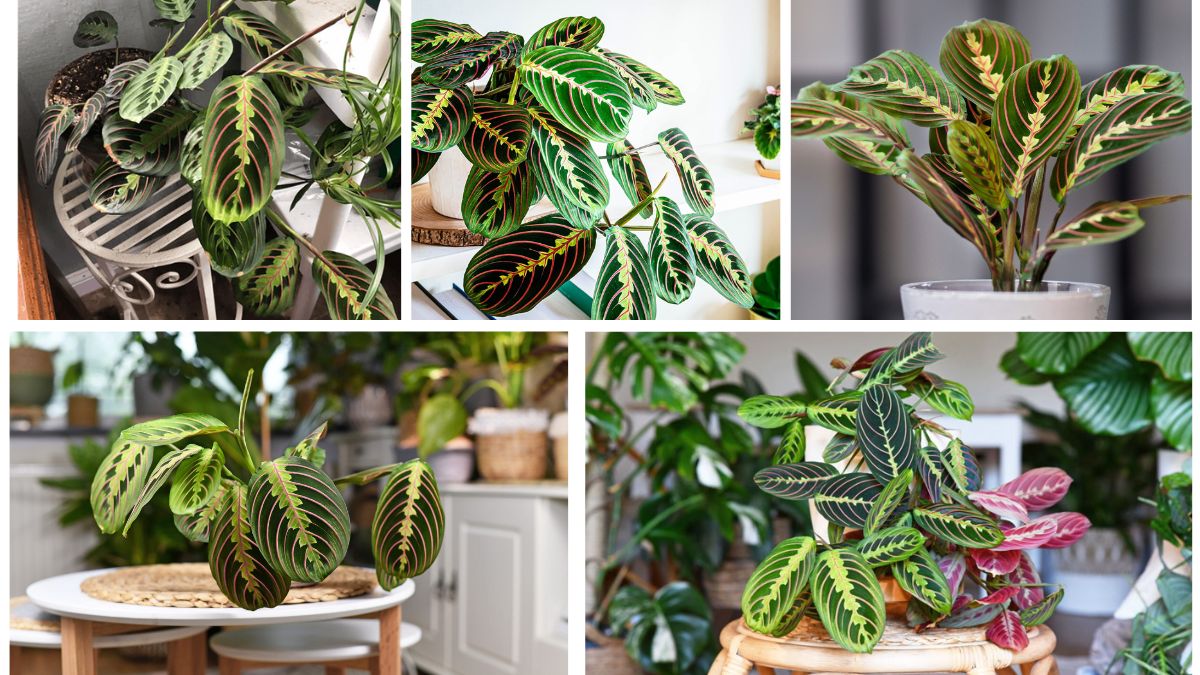Indoor plants are more than just decorative; they add freshness, calm, and natural beauty to any space. Among the most fascinating houseplants is the Prayer Plant (Maranta leuconeura), known for its unique leaf patterns and the remarkable habit of folding its leaves upward in the evening—much like hands in prayer. This striking feature makes it a favorite among plant enthusiasts and beginners alike.
If you’re just starting your indoor gardening journey, growing a Prayer Plant can be both rewarding and manageable. With proper care, it thrives indoors, showcasing lush foliage and sometimes even small, delicate flowers. In this detailed guide, we’ll cover everything beginners need to know about indoor Prayer Plant care, from choosing the right environment to solving common problems.
Understanding the Prayer Plant
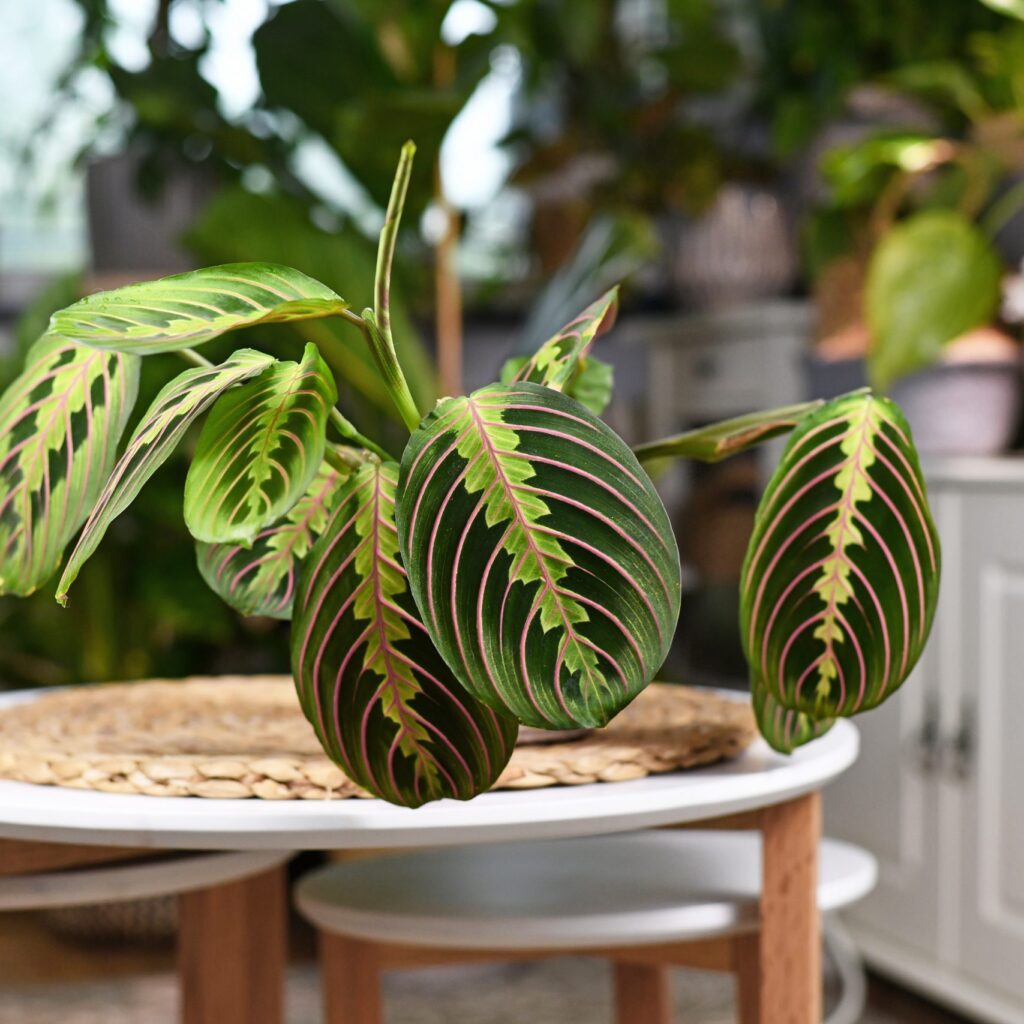
The Prayer Plant (Maranta leuconeura) originates from the tropical forests of Brazil. It belongs to the Marantaceae family and is prized for its oval-shaped leaves with intricate vein patterns, often featuring shades of green, red, cream, and purple. Its standout feature is nyctinasty—the daily movement of leaves that rise in the evening and lower during the day.
This natural rhythm adds an interactive element to your indoor garden, making the Prayer Plant feel alive and responsive to its surroundings.
Benefits of Growing a Prayer Plant Indoors
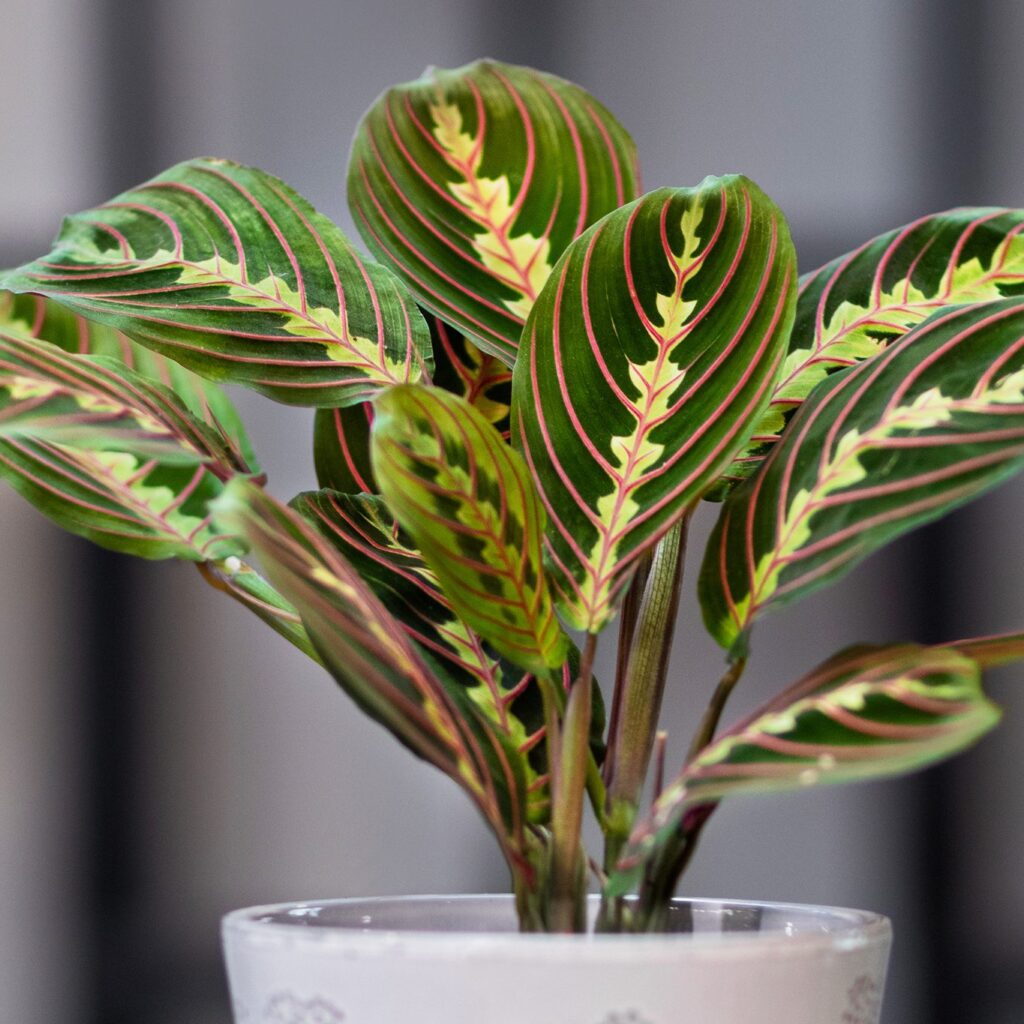
- Air-purifying qualities – Helps improve indoor air quality.
- Low maintenance – Relatively easy to care for with the right conditions.
- Decorative appeal – Eye-catching leaves bring vibrancy to any room.
- Pet-friendly – Non-toxic to cats and dogs, making it safe for pet owners.
- Soothing movement – Watching its leaves fold and unfold can be relaxing and meditative.
Step-by-Step Care Guide for Beginners
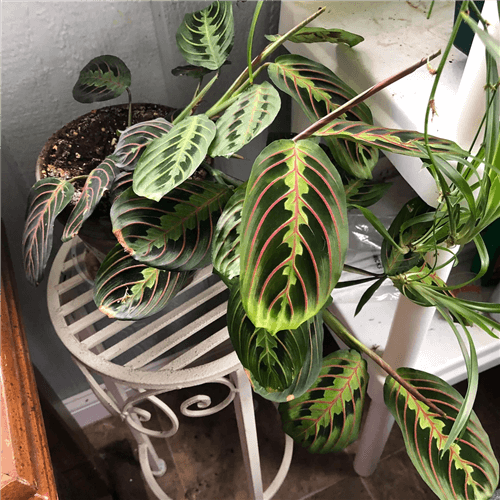
1. Light Requirements
Prayer Plants prefer bright, indirect light. Direct sunlight can scorch their delicate leaves, while too little light causes dull leaf color and slower growth.
- Place them near east- or north-facing windows.
- If using a south- or west-facing window, filter the light with sheer curtains.
- Grow lights can be helpful in darker rooms.
2. Temperature and Humidity
Being tropical, Prayer Plants love warmth and humidity.
- Ideal temperature: 65–80°F (18–27°C).
- Avoid cold drafts or sudden temperature drops.
- Maintain humidity levels above 50%.
- Increase humidity by:
- Using a humidifier.
- Grouping plants together.
- Placing the pot on a pebble tray filled with water.
3. Soil Selection
The right soil ensures strong root health and prevents waterlogging.
- Use a well-draining potting mix with peat moss, perlite, and loam.
- You can mix:
- 2 parts peat moss
- 1 part perlite or coarse sand
- 1 part potting soil
This mix mimics the plant’s natural tropical environment and retains moisture while preventing root rot.
4. Watering Needs
Prayer Plants require consistent moisture but dislike soggy soil.
- Water when the top inch of soil feels dry.
- Use room-temperature, filtered water if possible (they are sensitive to hard water and chlorine).
- Avoid letting the soil completely dry out.
- During winter, reduce watering frequency as growth slows.
5. Fertilizing for Growth
Prayer Plants are light feeders but benefit from regular nutrients.
- Feed with a balanced, water-soluble houseplant fertilizer (10-10-10 or 20-20-20).
- Apply every 2–4 weeks during spring and summer.
- Dilute the fertilizer to half-strength to avoid leaf burn.
- Pause feeding during fall and winter when growth is minimal.
6. Pruning and Maintenance
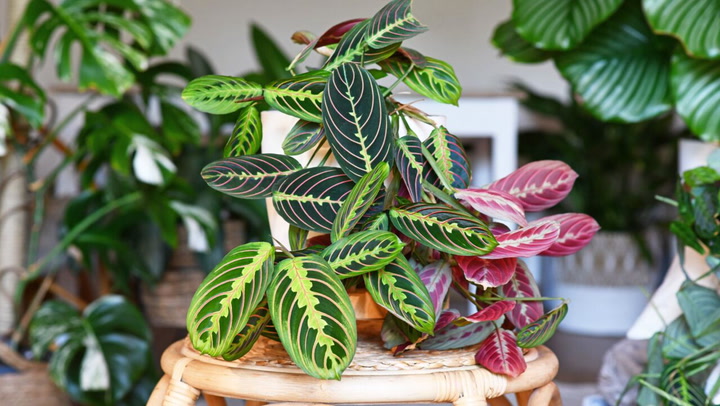
Pruning helps maintain a neat appearance and encourages bushier growth.
- Trim yellow or brown leaves with sterilized scissors.
- Pinch back leggy stems to promote fuller growth.
- Wipe leaves occasionally with a damp cloth to remove dust and allow better photosynthesis.
7. Repotting
Prayer Plants don’t require frequent repotting, but they should be refreshed as they grow.
- Repot every 2–3 years or when roots outgrow the pot.
- Choose a pot only 1–2 inches larger in diameter than the current one.
- Always repot in spring or early summer for the least stress.
8. Propagation
Propagating Prayer Plants is a great way to expand your indoor garden.
- Best method: Division during repotting.
- Gently separate root clumps into smaller sections.
- Replant divisions into fresh, moist soil.
- Keep new plants in a warm, humid environment until established.
Common Problems and Solutions
Even with good care, Prayer Plants can face challenges. Here’s how to troubleshoot:
- Yellowing Leaves – Caused by overwatering or poor drainage.
Solution: Let soil dry slightly before watering and check pot drainage. - Brown Leaf Tips – Usually due to low humidity or harsh water.
Solution: Increase humidity and use distilled or filtered water. - Curling Leaves – Indicates underwatering, low humidity, or cold drafts.
Solution: Adjust watering and humidity, and keep away from vents. - Pests (Spider Mites, Mealybugs, Aphids) – Common in dry indoor air.
Solution: Wipe leaves with neem oil or insecticidal soap and increase humidity. - Slow Growth – May be due to low light or lack of nutrients.
Solution: Move to brighter indirect light and fertilize regularly.
Seasonal Care Tips
- Spring and Summer: Growth is active. Focus on watering, feeding, and pruning.
- Fall: Reduce feeding and slightly cut back on watering.
- Winter: Provide extra humidity and avoid cold drafts. Prayer Plants rest during this season, so minimal care is needed.
Styling Ideas for Indoor Prayer Plants
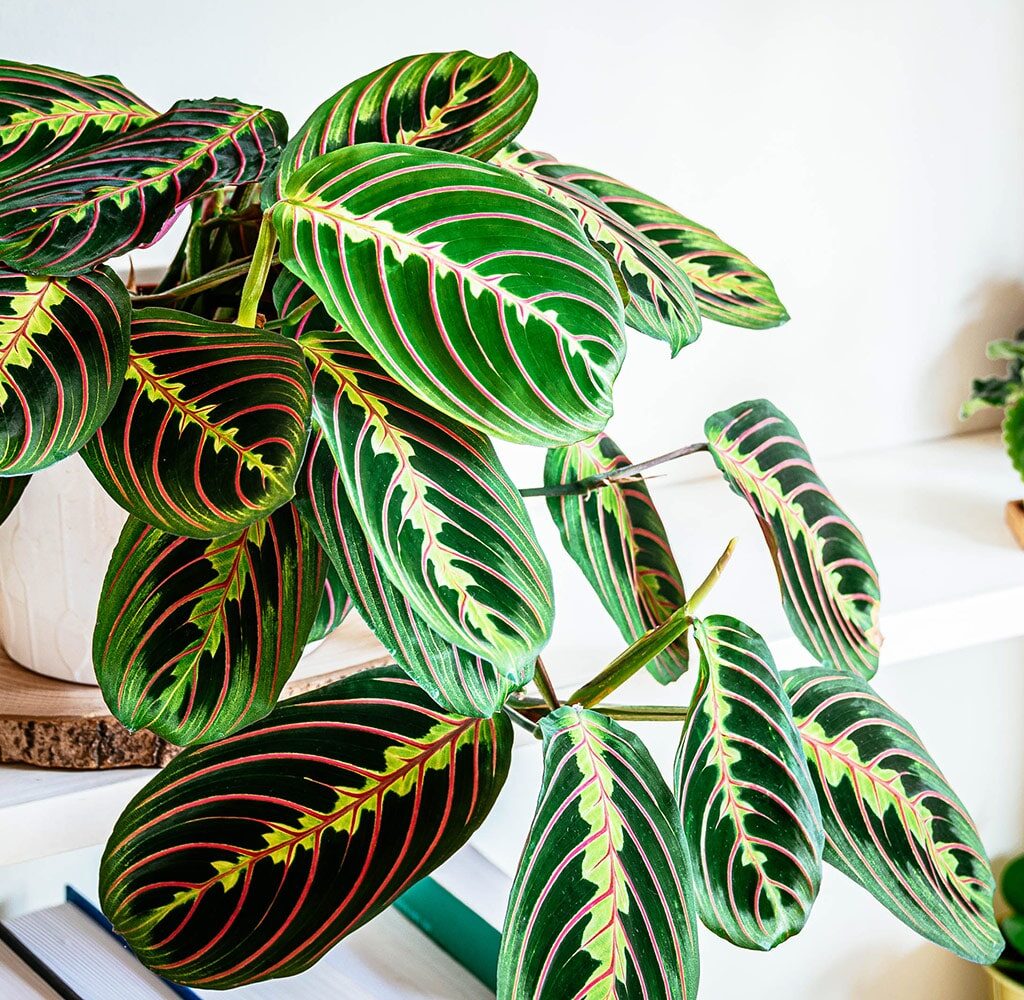
Prayer Plants are versatile and can be used to decorate in many ways:
- Place on shelves or side tables where the patterned leaves stand out.
- Use decorative ceramic pots that complement the foliage.
- Combine with other tropical plants like Calatheas and Pothos for a lush display.
- Hang in baskets where trailing stems can spill gracefully.
Final Thoughts
Growing a Prayer Plant indoors is an excellent choice for beginners. With its dramatic foliage, interactive leaf movements, and relatively easy care requirements, it adds charm and life to any space. By providing the right light, humidity, soil, and attention, your Prayer Plant will flourish and become a stunning centerpiece in your home.
Whether you’re starting your first houseplant journey or expanding your indoor jungle, the Prayer Plant is a rewarding and eye-catching choice. With these beginner-friendly care tips, you’ll be well on your way to enjoying vibrant, healthy foliage for years to come.
